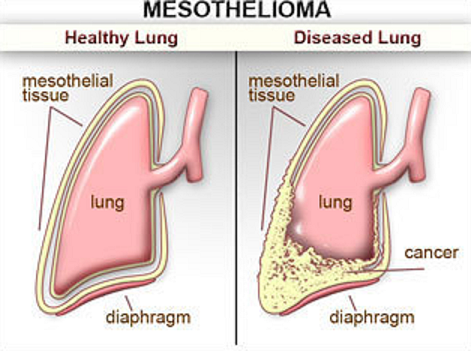What is Mesothelioma?
Asbestos exposure can lead to various infections and diseases including cancers of the lung, larynx, ovaries and testicles. Asbestosis, and pleural plaques, thickening and effusion are also common conditions that have been associated with asbestos. But one of the most serious health risks that long-term asbestos exposure can bring is mesothelioma.
If you have been exposed to asbestos or are potentially at risk of exposure, it is important to have a deeper understanding of mesothelioma. Having the right information will allow you to determine the next steps you can take to protect your health and reduce further complications.
What is mesothelioma?
Mesothelioma is a type of cancer that attacks the protective lining of the lungs, heart and abdomen. In Australia, the number of mesothelioma cases is among the highest in the world. That is because the use of asbestos as a building and infrastructure material here was among the highest in the world, before its use and import were banned in the country. In 2013 alone, an estimated 656 deaths due to mesothelioma were reported in Australia; the number is expected to rise because the condition develops and shows symptoms only after years or decades of exposure.
Who can catch mesothelioma?
Mesothelioma is typically detected 15 to 40 years after the patient was first exposed to asbestos. The risk runs higher the longer the time of exposure and the higher the concentration of asbestos. However, this disease does not only manifest after long-term exposure; there are also many cases where mesothelioma was a result of short-term or one-time inhalation or consumption of the toxic fibres of the asbestos material.
Because of how the disease develops over time, those who may be prone to exposure in the workplace are the most at risk. Some of the highest risk occupations include construction workers, firefighters, shipyard workers, chemical workers, machinery operators, trade labourers and power plant workers. The families of people who have been exposed to asbestos are also at risk; the toxic fibres cling to clothing and can affect others that come in contact with them.
What should you do?
If you suspect that you may have been exposed to asbestos or if you’re experiencing the symptoms of mesothelioma, the following steps can help:
– See a doctor to talk about your concerns and undergo a check-up. At the moment, there is no sure cure for mesothelioma but there are ways to improve quality and length of life.
– If your concern is workplace-related, inform your employer or worker’s union. Also, seek legal help on receiving just compensation.
– Asbestos handling should never be a DIY project. If you have suspicions about asbestos in your home or workplace, talk to asbestos experts so they can take care of the testing, removal and management for you.
Call Jim’s Asbestos Removal for your free no-obligation quote on 131 546 or book online.



